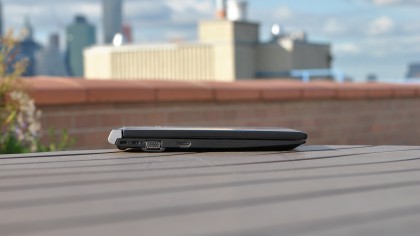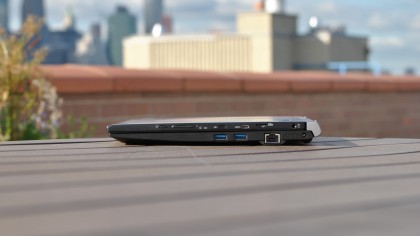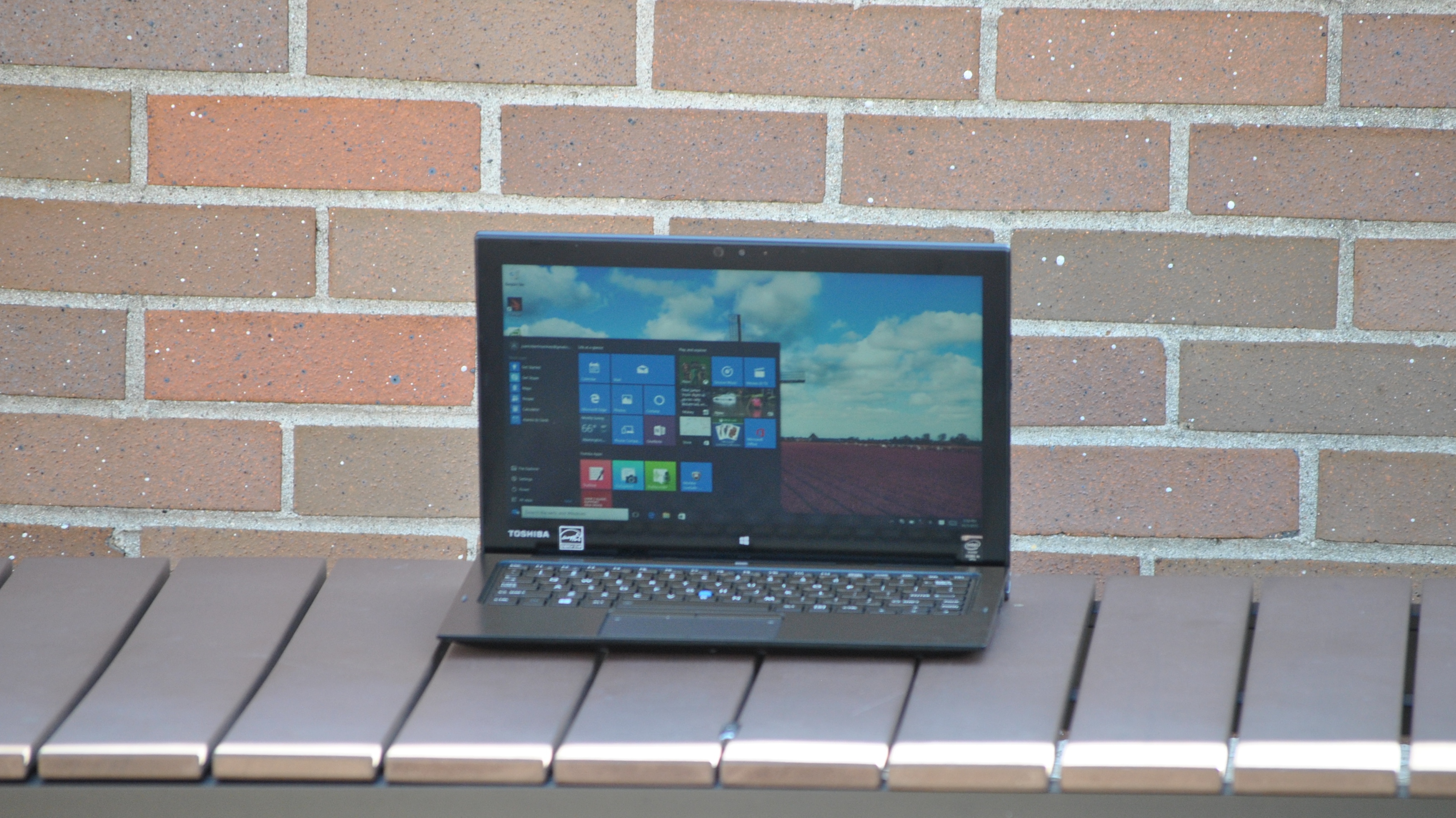Why you can trust TechRadar
Like the Dell Venue 11 Pro and the Elite x2, the Portege runs on an Intel Core M chip, which is designed for mobile computing. Core M processors lack the speed and power of the Intel Core i series, which can be found on hybrids like the Microsoft Surface Pro series.
As I mentioned in my Elite x2 review, Core i processors are especially suited for Windows 10, which is designed to enable enhanced productivity, such as multitasking between spreadsheets and video editing. With a Core M processor, you can still get through a typical work day without noticing any issues, but if your job requires heavy spreadsheet use, or video editing, or if you want to sneak in a PC game, you're going to want something that comes with a Core i processor.

Specifications
Here is the Toshiba Portege z20t configuration sent to techradar for review:
- CPU: 1.2 GHz Intel Core M 5Y71 (dual-core, 4MB cache, up to 2.9GHz with Turbo Boost)
- Graphics: Intel HD Graphics 5300
- RAM: 8 GB
- Screen: 12.5-inch 1,920x1,080 HD resolution
- Storage: 128 GB
- Ports: 2 x USB 3.0 (power keyboard), 1 x Ethernet (power keyboard), 1 x HDMI (power keyboard), 1 x RGB video (power keyboard), 1 x HDMI, 1 x microSD, 1 x micro USB
- Weight: 1.71 pounds
- Size: 12.2 x 8.5 x 0.8 inches (W x D x H) (tablet with keyboard)
What you'll immediately love about this device is the abundance of ports and connections available. Even on the tablet alone, you're able to connect via HDMI, micro USB and microSD. That's pretty rad for a tablet. Most manufacturers leave the ports and connections off of the tablet, in order to minimize thickness. Toshiba was able to do both simultaneously. Kudos.

Benchmarks
Here's how the Toshiba Portege x20t performed in our suite of benchmark tests:
- 3DMark: Cloud Gate: 2,976; SkyDiver: 1,435; Fire Strike: 400
- Cinebench CPU: 113 points; Graphics: 14 fps
- PCMark 8 (Home Test): 2,187
- PCMark 8 Battery Life: 7 hours and 54 minutes
In the Cinebench graphics test, the Portege and the Elite x2 1011 managed a frame rate of 14 frames per second (fps), which is about 7 frames slower than the Venue, and 11 frames worse than Core i-powered Microsoft Surface Pro 3. For the CineBench CPU test, which measures a processor's multi-core performance via a 3D image rendering task, the Portege got whooped by everyone, even the Elite x2, which scored 152 points, a score that is about 30 points lower than the Dell, and 50 points lower than the Surface.
The Portege and the Elite scored 400 points in 3DMark's Fire Strike test, which measures graphics rendering. The Dell scored 512 points. The Surface scored only 347 points.
The Portege lost to all of its competition on the 3DMark Sky Diver test by a wide margin (1,435 to the Elite's 1,491 to the Dell's 1,862 and the Surface's 2,242).
So, even compared to devices in its own class, the Portege runs slightly slower. But where the Portege absolutely wallops the competition is in battery life.
Battery
Only the Elite x2, which ran for 7 hours and 41 minutes (about 14 minutes less than the Portege) during the PCMark 8 battery test, is able to compare to the Portege in this competition. The Surface only ran for 2 hours and 38 minutes during this test, while the Venue ran for 4 hours and 1 minute.
When playing looped video on the Elite x2, I was able to run the battery for 7 hours and 15 minutes as a tablet and 11 hours and 20 minutes when connected to the power keyboard. With the Portege I was able to run the same test for 7 hours and 45 minutes as a tablet, and 14 hours and 25 minutes with the attached keyboard.
Current page: Specifications and battery life
Prev Page Introduction and design Next Page Final verdict